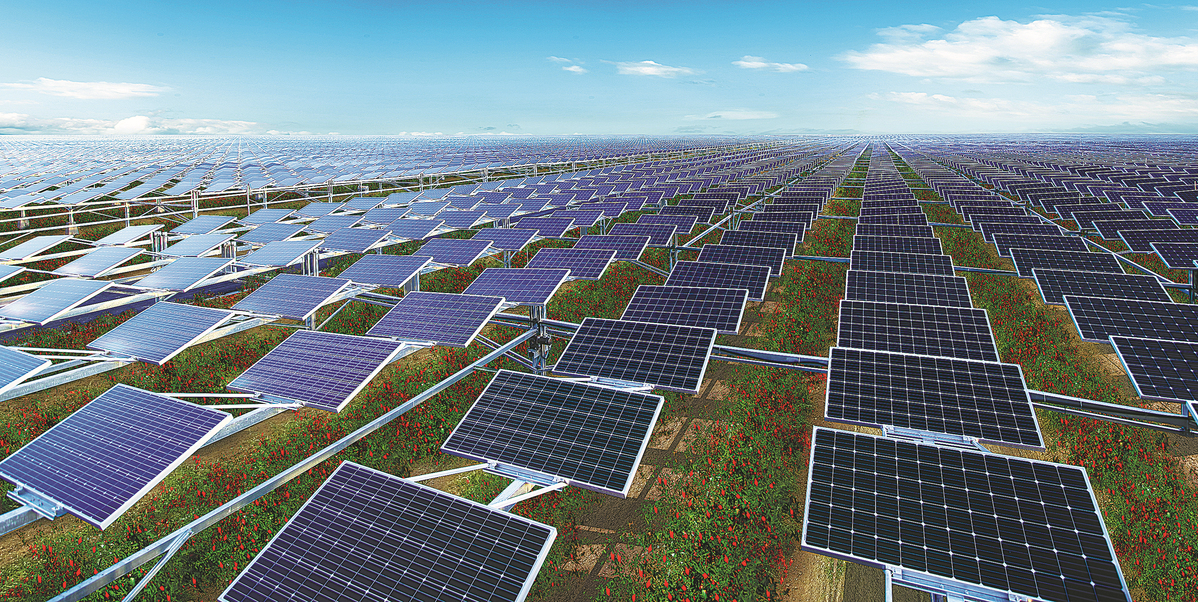Proper planning to realize 'dual carbon goals'
By Yue Xiaohua | China Daily | Updated: 2022-04-27 07:45

China's pledge to peak its carbon dioxide emissions before 2030 and achieve carbon neutrality before 2060 is just one example of its determination to strengthen international cooperation in the fight against climate change.
In its landmark report, "Climate Change in 2021: the Physical Science Basis", issued on Aug 9, the Intergovernmental Panel on Climate Change has said the world should increase the pace of reducing CO2 emissions. Carbon emissions of some economies have already peaked, and they have set a dateline for achieving carbon neutrality. For example, Austria and Iceland will achieve carbon neutrality in 2040, Sweden in 2045, and the European Union in 2050.
China has been making strenuous efforts to meet the goals of the Paris Agreement and the United Nations Framework Convention on Climate Change, while participating in and contributing to the construction of a global ecological civilization.
Besides, the 30-year gap between China's carbon emissions peak and carbon neutrality is shorter than many other economies. And to achieve the "dual carbon goals", China has adopted a whole-society approach and set long-term targets. But while doing so, as there is a long way to go, it needs to strike the right balance between fighting climate change on one side and economic development, people's livelihoods and national security on the other.
First, emissions reduction does not mean only reducing carbon emissions, it also includes a shift to low-carbon, green production and lifestyle without affecting overall development.
Second, emissions reduction is in the fundamental interest of the people but it should not affect their normal lives. So, before intensifying emissions reduction, China has to ensure energy security, food security and the security of its industry and supply chains.
Third, China should not use "one size fits all" policies to cut emissions. Previously, many provincial and city authorities tried to reduce CO2 emissions and control energy demand by suspending the approval of high energy-consuming and high-carbon emitting projects. Such a short-sighted approach did reduce emissions in the short term but can never be conducive to realizing the long-term carbon emissions goals.
It's time local authorities followed the central leadership's advice to understand the objective reality of regional resource distribution and industrial division of labor, and worked to peak emissions in their jurisdictions in an orderly and gradual but steady manner.
It's the duty of all individuals in China to make sincere efforts to reduce emissions, by heeding government guidelines and following a moderate and low-carbon lifestyle. State organs, enterprises and other organizations, too, should fulfill their responsibilities, so as to achieve China's "dual climate goals".
In July 2021, China's national carbon market began online trading, a significant step which will help China achieve its "dual carbon goals". Carbon emissions from more than 2,000 power companies in the first batch of trading are expected to be more than 4 billion tons a year, making the market the largest in terms of the volume of greenhouse gas covered. More industries will join the carbon trading in the future.
In November, the State Organ Affairs Administration, the National Development and Reform Commission and other government organizations jointly issued a notice on the action plan to deepen the green and low-carbon transformation of public institutions in a bid to prompt public institutions to reduce emissions and conserve energy, which will help China to peak its carbon emissions before 2030.
And in December 2021, the State-owned Assets Supervision and Administration Commission of the State Council, China's Cabinet, issued the "Guiding Opinions on Promoting the High-quality Development of Central State-owned Enterprises to Achieve Carbon Peaking and Carbon Neutrality" which requires the central SOEs to fully integrate the targets into their mid- and long-term development plans.
Also, China will focus on reducing emissions from industries such as iron and steel, non-ferrous metals, building materials, petrochemical and chemical, and urban and rural construction, and develop a circular economy, by promoting the comprehensive use and recycling of resources.
Adjusting the energy structure is the key to reducing emissions, since energy is the main source of carbon emissions. China's energy resource endowment is characterized by rich coal, poor oil and inadequate gas. As such, coal has always been China's main source of energy. According to China's energy consumption structure in 2020, coal and oil accounted for 56.6 percent and 19.6 percent of the total primary energy consumption.
Therefore, to maintain energy security and economic stability against this background, China can only phase down, rather than phase out, the use of coal, and increase the development and use of renewable energy, raise the proportion of non-fossil energy consumption in an orderly manner, and gradually reduce the use of coal, so as to promote low-carbon transformation of the energy industry.
The views don't necessarily reflect those of China Daily.
The author is an associate professor at the Institute of Law, Chinese Academy of Social Sciences.
If you have a specific expertise, or would like to share your thought about our stories, then send us your writings at opinion@chinadaily.com.cn, and comment@chinadaily.com.cn.
























